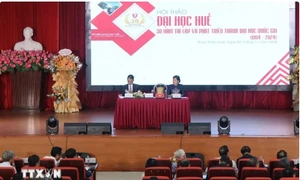Son said the department has completed two GIS databases on urban planning and management of construction, housing, and real estate markets, launched online professional certification exams through shared software of the Ministry of Construction, and digitised a large amount of data on the water supply network in the province.

It is placing a high focus on building and updating data in the two existing databases, actively working to adopt Building Information Modeling (BIM), an advanced process applied in the architecture, engineering and construction (AEC) industry based on 3D digital models used throughout the lifecycle of a design, infrastructure and construction project. This is in accordance with a project to apply the BIM model in work construction and management, aiming to effectively manage construction activities in the locality.
The GIS - Geographic Information System now comprises seven databases on postal and telecommunications; urban planning; planning and status of industrial zones; provincial land use planning map for the 2016-2020 period in Bac Giang city; industrial clusters, markets, commercial centres and supermarkets; provincial-level socio-economic indicators; current status of crop and livestock farming areas. Among these, the urban planning database is a crucial factor for other databases to utilise.
The urban planning database, launched by the department in 2019 and put into operation since 2020, has effectively demonstrated its maximum efficiency in several areas. Specifically, there is now a centralised management database that has been progressively standardised and synchronised for urban planning and urban infrastructure systems across the province. This database, built on a digital map, serves as a tool to provide information about urban planning and basic urban infrastructure. It enables citizens and businesses to access, search and tap information through the Internet.
On the foundation of the construction planning database, various specialised planning content has been integrated. This includes the planning of the provincial transportation network, industrial zones and clusters, as well as the locations of tourist and cultural sites, offices, and businesses. All of this information is mapped digitally. As a result, the planning and investment sector could easily look up and provide preliminary introductions about investment locations, contributing to improving the efficiency of business operations.
According to Deputy Director of the provincial Department of Construction Nguyen Ngoc Son, in the near future, the provincial People’s Committee and Steering Committee for Digital Transformation will drastically direct and allocate resources for updating the urban planning database as a foundation to deploy sub-databases for each locality and sector. This approach aims to create a comprehensive overview of infrastructure development, encompassing both technical and social aspects. It contributes to the formulation of synchronous and effective socio-economic development policies.
The provincial Department of Information and Communications will hold training courses to share experience in digital transformation and database management. These efforts are intended for sectors and localities to study and choose effective implementation solutions, he added./.
VNA























